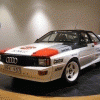Selges: Cerwin Vega Stroker, Earthquake Magma
Ranger emnet
-
Lignende innhold
-
Populære emner nylig
Bilforumet diskusjon
Bilforumet er plassen du diskuterer bilrelatert innhold. Du spør gode spørsmål og får hjelp av dyktige medlemmer med til sammen tusenvis av år med erfaring fra bilhold. Du kan diskutere alt fra bremseproblemer, tips til montering av ekstralys, hjelp til feilsøking. Du kan også dele dine erfaringer med andre og hjelpe andre medlemmer av dette fantastiske samfunnet.
Kommersielt innhold
Innholdet på forumet er i all hovedsak brukergenerert og blir moderert av brukerne selv. Det er strenge regler for posting av direkte reklame fra eksterne aktører. Forumet eies av Ekstralys as og er hovedsponsor av forumet. Ekstralys og enkelte partnere har anledning å poste umoderert innhold som kan inneholde produktplasseringer. I slike tilfeller vil kommersielt innhold være merket av den som poster i dens signatur.





Anbefalte innlegg
Join the conversation
You can post now and register later. If you have an account, sign in now to post with your account.